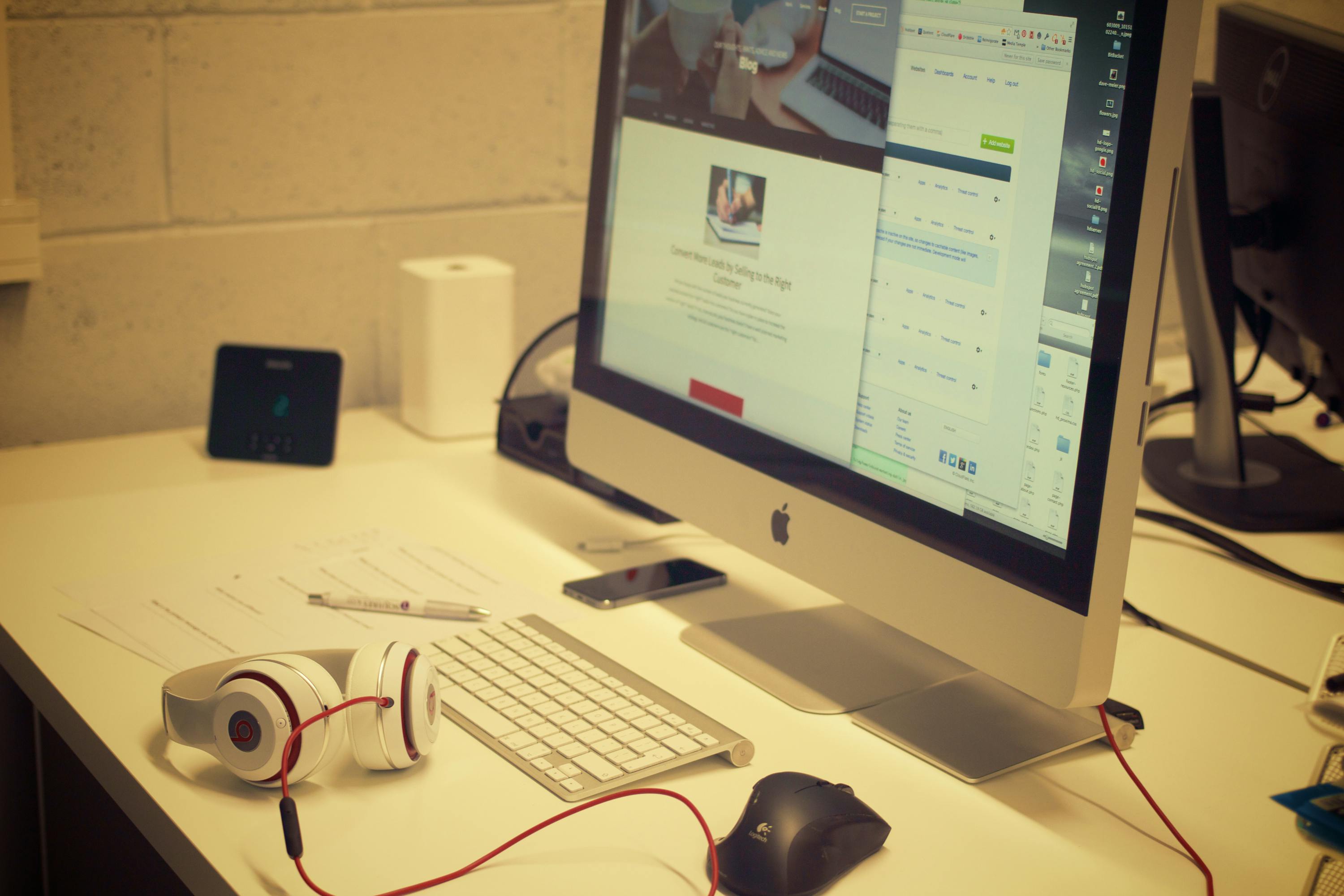[soundcloud url=”https://api.soundcloud.com/tracks/237783407″ params=”color=ff5500&auto_play=false&hide_related=false&show_comments=true&show_user=true&show_reposts=false” width=”100%” height=”166″ iframe=”true” /]
There is no video recording for this episode!
This week on the Coders’ Startup, we have another solo show. Carter and I had a bit of a communication snafu, to the effect that I missed the line in his email in which he informed me he was good to record the episode. Oops!
All is not lost, though, because I know enough about today’s topic to carry the episode by myself. Fulfilling the promise I made to you in last week’s November income report, I will be talking about webinars and how to run them successfully.
The goal of a webinar is ultimately to make sales, so a successful webinar will also be a profitable one. The keys to hosting a profitable webinar are planning and structure.
I have run two webinars in the past, one only a few weeks ago, and both were profitable. My tips and advice are drawn from this experience.
The larger process of running a webinar can be broken into three parts: the pre-webinar, the webinar, and the post-webinar. The amount of time and work you will need to put into each part is more or less equal.
Part 1: The Pre-Webinar
Before you can host your webinar, you need to generate interest and get people to sign up to attend it. The pre-webinar phase is all about driving leads and building your audience.
There are many different strategies you might  use to gather attendees, but if you have an email list of leads, using it will probably be your simplest option. I have a very large email list (about 25 thousand people); for my last two webinars, I emailed everyone on the list to gather interest, and I received good results.
use to gather attendees, but if you have an email list of leads, using it will probably be your simplest option. I have a very large email list (about 25 thousand people); for my last two webinars, I emailed everyone on the list to gather interest, and I received good results.
Pitching Your Webinar
Whether you send out a mass email or stir up interest in some other way, you should treat the gathering of leads for you webinar like a sales pitch. You need to convince your audience that attending your webinar will be a good use of their time.
Give a brief overview of the webinar and go into detail about the benefits you are offering. Explain what topics you will be covering and why those topics are beneficial to your audience. Tell them why they NEED to attend, what they will learn, and how this knowledge will be valuable to them in the future.
Sell them on how spending 45 minutes to an hour with you will make their lives better in the long term, not just the short term. Convince them the return on the investment of their time will be well worth it.
Setting Dates and Times
You will have to decide on the best day of the week and time of day to run your webinar. You should do your best to make the day and time convenient for your target audience, because the more people you can get to attend your webinar, the more sales you will get. Period.
I usually run my webinars twice, with one session on Tuesday and the other on Thursday. I do this so my audience has an option to choose the day that works best for them, and I run my webinars on weekdays because most of my traffic comes in during the week, not on the weekend.
When choosing your starting time, be aware of the time zone(s) in which your audience members live. For example, I know that 95% of my audience lives in the United States, and the U.S. is spread between four different time zones.
I don’t want to hold a webinar at 8 AM, because while this time might work for people like myself who are on Eastern Standard Time (such as the East Coast of the U.S.), it is an inconvenient time for people on the West Coast.
I usually start my webinars between 1 PM and 3 PM EST, because this is a good compromise across all the time zones. Additionally, I see a lot of other people hosting webinars during that time window, and so many people wouldn’t be doing it if it didn’t work well.
If you aren’t sure what days and times are best for you audience, you can always ask them! I am planning to survey my email list in the near future to determine their preferences.
Webinar Hosting Platforms
If you want to run a webinar, you’ll need to use a webinar platform that will allow you to host a video conference your audience can join.
There are a lot of different platforms out there; examples include Webinar Ninja, GoToMeeting and Google Hangouts On Air (which is free to use). I use the program WebinarJam.
WebinarJam isn’t perfect, but it works for me, and it is currently on sale for $397 per year. This may sound like a steep price, but you will make that money back quickly if you can drive enough people to your webinar. About 300-350 people attended each of my two webinars, and I earned over $2,000 on each one, making back my initial investment and then some.
But what exactly are these platforms, and  why would anyone pay to use one if they could use Google Hangouts for free?
why would anyone pay to use one if they could use Google Hangouts for free?
The answer is because the paid platforms offer a ton of features Google Hangouts does not–namely, suites of tools that help facilitate all of the things you must do before and after the actual webinar in order for it to be profitable.
For the webinar itself, all you need is some sort of live-streaming software, but for the pre- and post-webinar, you really need the extra tools these platforms offer. That’s where you get your money’s worth on the product.
WebinarJam allows me to create the entire webinar sequence, from the sign-up page to the emails that go out when someone signs up, the reminder emails, the SMS (text) message reminders, and the post-webinar emails that push my product.
The most useful part of the platform is the ability to copy and paste a webinar sequence and reuse it for future webinars. The first webinar you run will take a long time to set up, but the second webinar will be easy as long as you are using a similar process. It will only take you one hour to set up subsequent webinars instead of eight hours.
Another awesome feature of WebinarJam is one-click registration. You can insert a link in your email that someone can click to instantly register for a specific webinar session. Contrast this with redirecting your audience to a landing page on which you would probably lose 50% of people who clicked the link in your email.
Speaking of landing pages, WebinarJam provides a platform for creating them if you want to take that approach. You can redirect traffic to your webinar sign-up page, and you can sort your landing pages by conversion rate to determine which is the most successful. The best conversion rate I saw for my recent webinar was 40%.
The software allows you to set up all your notification emails, and you can even choose from some very good template emails. This includes your post-webinar email sequence, which can include replay links with an expiration date to create scarcity.
You don’t have to use WebinarJam even though I just sang its praises, but I would strongly recommend using a paid program that provides the additional tools you need. Research your platform options and choose one that feels best for you and your audience.
Part 2: The Webinar
On the day of your webinar, you will probably be nervous because you are human. There is a lot on the line, especially if you paid a lot of money in ads to get people to attend.
I have done some borderline-superstitious things before my webinars to mitigate all apparent risks, such as rebooting my computer and my modem, and ending all programs that would use bandwidth (Dropbox, chat programs, torrent programs).
On second thought, it isn’t a bad idea to minimize your nonessential bandwidth usage. Go ahead and close unnecessary applications just to be safe.
You may worry that something will go wrong during your webinar. Well, guess what? Something WILL go wrong.
It may not be during your first webinar, it may not be during your tenth webinar, but somewhere along the line, you will run into a problem and you’ll have to figure out how to fix it on the spot. This is where entrepreneurs cut their teeth and really earn their pay.
I had my internet connection cut out during one of my webinars, but I didn’t know it and I kept going with my presentation. Needless to say, I didn’t make any sales during that webinar, but I did make some sales from the post-webinar sequence.
If you can’t solve whatever problems arise, try at least to learn from your mistakes. Then move one with your life and try again next time. That’s the best advice I can give you.
Starting Your Webinar Early
It’s a good idea to send out a reminder email or text message 15 minutes or half an hour before your webinar is scheduled to begin. After you send it out to your audience, go ahead and sign onto the webinar channel early.
Some of your attendees may also show up  early, and this is a great opportunity to greet them and make them feel welcome.
early, and this is a great opportunity to greet them and make them feel welcome.
WebinarJam (and probably most of the other popular webinar platforms) provides a chat box that allows your audience to interact with you. Strike up a conversation with any early arrivals. Be inviting and warm, and thank them for attending. Ask them why they came to the webinar and learn a few things about them. Try calling them out by name to make them feel special.
If you join the channel early, then you should immediately inform anyone watching the webinar as a replay that they might want to fast forward to the beginning of the webinar proper. For example, you should advise them to fast forward 15 minutes if you logged on 15 minutes before your scheduled start time.
The Introduction to Your Webinar
Begin your presentation with a brief overview of who you are, what you are going to be teaching, and why this is beneficial to your audience. Reiterate what all your pitch emails said about the various benefits of the webinar, and try to get your audience excited to hear what you have to say.
Remember, you’ve gotten them to actually show up to the webinar, but now you need to convince them to stay until the end.
Present yourself as an authority on the subject matter and explain why they should listen to you in the first place. Keep in mind the people in your audience may have heard of you only once through a Facebook ad and are essentially cold leads.
I usually talk about who I am, where I was born, and the fact I have been a programmer since the age of 10. I also talk about my past career as a professional programmer and how I attained the title of Senior Software Engineer.
Give your credentials and try to make them believe you know what you are talking about, but also share some fun information about yourself. Act natural, be real, and use your personality. Don’t be a robot who reads from a sheet of paper.
It’s OK if you’re a little nervous, but it’s not OK to be boring. Let your personality come across, even if it is quirky or geeky. People connect with other people, so act like a person.
The introduction should only last about five or ten minutes. Introduce yourself, build your authority, restate the benefits of the webinar, and then move into the main body of the presentation.
The Main Body
This part should constitute the majority of your webinar. As much as your goal is to sell something at the end of the session, that’s not why people attend. They attend because they want to learn something from you, and you need to respect the time they invest in your webinar.
Don’t turn the whole thing into a pitch-fest. Instead, do nothing but give away free, useful information for the next 45 minutes.
As for the duration of your main body of content, 45 minutes is a good rule of thumb. I wouldn’t recommend going under 45 minutes, but you can go over if it seems appropriate, as there does not seem to be a dramatic drop off in viewers after the 45-minute mark. So long as you provide solid content, people will stick around.
Consider doing Q&A throughout the webinar. If someone asks a question in the middle of your presentation, it’s a good idea to stop and answer it instead of waiting until the end.
Answering someone’s question promptly is a buying trigger, which means they will be more likely to buy your product at the end of the webinar. Conversely, they may get frustrated and leave the webinar if they have to wait until the end to receive an answer to their question.
For 10-15 minutes at the end of the webinar, transition into your pitch. Try to make it tie into what you just taught your audience so they don’t feel like you’re trying to sell them something they don’t care about.
In my webinars, for example, I teach about topics in Java programming because that is the same thing people learn from my paid product. If your audience is interested in the subject matter of your webinar, and that subject matter is closely related to the product you want to sell them, then they are likely to be interested in your product as well.
If there is a strong connection between your webinar content and your product, you could see as high as a 15-20% conversion rate by the end of the whole webinar sequence (which includes the post-webinar sequence).
Be sure to do more Q&A at the very end of the webinar so no one leaves with any lingering questions. I will typically stick around for 30 minutes or more, answering any and all questions that are raised.
A final thing to consider for the main body of the webinar: some people who host webinars like to acknowledge any sales that come in during the webinar and thank the customer by name. This builds the social aspect of the webinar and also shows other audience members that people are buying your product, which may convince them to buy as well. Give this tactic a try if it feels right to you.
A Word on Attendance
You should be aware going into your webinar that not everyone who signs up will actually show up on the day. In reality, about 30-50% of those people will attend.
Don’t feel like a failure if fewer than 50% show up–the true average is probably around 30%. On the other hand, if only 5% show up, then you may have done something wrong, and you’ll have to determine your error and fix it before hosting your next webinar.
The Power of the Webinar
Out of all the people who attend your webinar, perhaps 10-30% will purchase your product if you present a good offer at a reasonable price.
You will have built a relationship with your audience throughout the hour of content you have delivered, and they will want to reciprocate your kindness by purchasing your product.
This is where the real power of the  webinar lies. Webinars are effective because people buy products from other people they know, like and trust. If you gave your audience valuable content and if you came across as a real, relatable, empathetic person, then they will feel they have come to know you, they will like you, and they will trust you.
webinar lies. Webinars are effective because people buy products from other people they know, like and trust. If you gave your audience valuable content and if you came across as a real, relatable, empathetic person, then they will feel they have come to know you, they will like you, and they will trust you.
As long as you present a good offer on a good product, they will buy from you.
I have personally attended other people’s webinars knowing full well they would try to sell me a product and being resolved only to learn the free information and pass on the product, only to buy the product in the end. That’s how powerful webinars are.
You can make your product seem even more irresistible by offering bonuses at the end of your webinar–I like to do three. Then throw in a guarantee to close the deal.
Part 3: The Post-Webinar
Once the webinar is finished and you have signed off your livestream, you still have work to do.
Within the first hour after the webinar, send out the replay link to everyone who signed up so people who couldn’t attend can watch the recording. Add scarcity to the replay link, such as having it expire in 72 hours. If there is no scarcity, then people will continually put it off and never actually watch it.
Some people who run webinars purposefully do not offer a replay as an incentive to get their audience to watch it live. If you choose this approach, be sure to make it clear in your pre-webinar email sequence.
In your first post-webinar email, encourage those who missed the livestream to check out the replay, and reiterate what they will learn and how it will benefit them. Try to get them excited to watch by talking about how much fun everyone had and the great questions that were asked.
In subsequent emails, remind everyone about the offer you made at the end of the webinar. Pitch it like you would any product, focusing as always on the benefits.
I like to create even more scarcity in the form of a coupon code. People who attended the webinar or watched the replay can use this coupon code for a discount on the product, but only if they act before the expiration date.
Again, always use scarcity. If your goal is to make sales, scarcity just works.
Send out one email each day to remind people about the offer until the expiration of the special discount period. Consider sending out multiple emails on the last day of the sale as a final push to anyone still holding out.
So there you have it: my entire webinar sales funnel. After reading through it, you should have a good understanding of how you can run your own webinar, and you should also be well aware of the huge potential webinars offer for adding to your existing revenue.
Don’t forget to check out last month’s income report if you haven’t already, in which I talked about my new Coders Campus product offering and the successes I have had with the annual subscription upsell I am offering on monthly sign-ups.
And finally, something a little different. You probably don’t know I hire a writer to create these show notes from the podcast I record. His name is Mark, and he does fantastic work. I don’t even have to look at my show notes after he is finished with them because I am so confident in the work he does. That’s saying a lot, because I am a pain in the butt to work with, and I’m a hard man to please.
Having said all that, I know Mark may be interested in expanding his client base in the future, so if you perhaps run your own podcast or otherwise need someone to take audio and transcribe it into text that reads like a dream and that actually sounds like you and fits your personality, leave a comment on the website or email me at [email protected], and I will be happy to put you in contact with him.
Thanks for tuning in to this week’s episode. Until next time, happy learning!
[Note from the writer: If you are interested in my services, also feel free to email me directly at [email protected]. I would love to discuss the possibility of working with you! – Mark W.]
LINKS